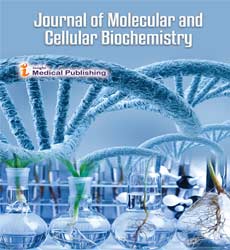Modeling and dynamics studies of cytochrome bd oxidase in staphylococcus aureus & escherichia coli
Abstract
Cytochrome bd oxidase is one of the respiratory oxidase found in prokaryotes and have been implicated in the survival of some bacteria, including pathogens, under conditions of low aeration. In bacteria there are two main types of respiratory cytochrome oxidases: Heme/copper oxidases & Heme-only cytochrome bd quinol oxidase, which is associated with microaerobic dioxygen respiration. Cytochrome bd oxidases are heterodimers and consists of two integral membrane proteins referred to as subunits I and II. Subunit-I consists of nine transmembrane helices, and the large “Q- loop” has been implicated in quinol oxidation. The Q-loop is predicted to occur between the sixth and the seventh helices. The heterodimers contain three heme components a low-spin heme, b558, two high-spin hemes, b595 and d but no copper. It plays a crucial role in the survival and oxidative stress protection either by generating a proton motive force by reducing O2 to water or by scavenging O2 to protect the cell of facultative and anaerobic bacteria. Cytochrome bd oxidase subunit-I is present in E.coli & S.aureus. The purpose of this study is to find a potential inhibitor for cytochrome bd oxidase and to understand the residues involved in the interactions of copper lacking cytochrome bd oxidase. As the crystal structure was not available in structural databases it was modelled and docked with the substrate ubiquinol retrieved from Pubchem. Then the best docked structure was used for dynamics study to understand the interactions better. Docking studies on cytochrome bd oxidase of S.aureus and E.coli with ubiquinol inferred binding in the Q-loop region. On Dynamic simulation studies, Lysine and Glutamate showed H-bond interactions with ubiquinol and between them as well. During Dynamics there was a fluctuation in the H-bond present in between the Lysine and Glutamate. This fluctuation further could pave way to form an interaction with Histidine. These polar residues may in turn mediate proton motive force and electron transfer.
Open Access Journals
- Aquaculture & Veterinary Science
- Chemistry & Chemical Sciences
- Clinical Sciences
- Engineering
- General Science
- Genetics & Molecular Biology
- Health Care & Nursing
- Immunology & Microbiology
- Materials Science
- Mathematics & Physics
- Medical Sciences
- Neurology & Psychiatry
- Oncology & Cancer Science
- Pharmaceutical Sciences
